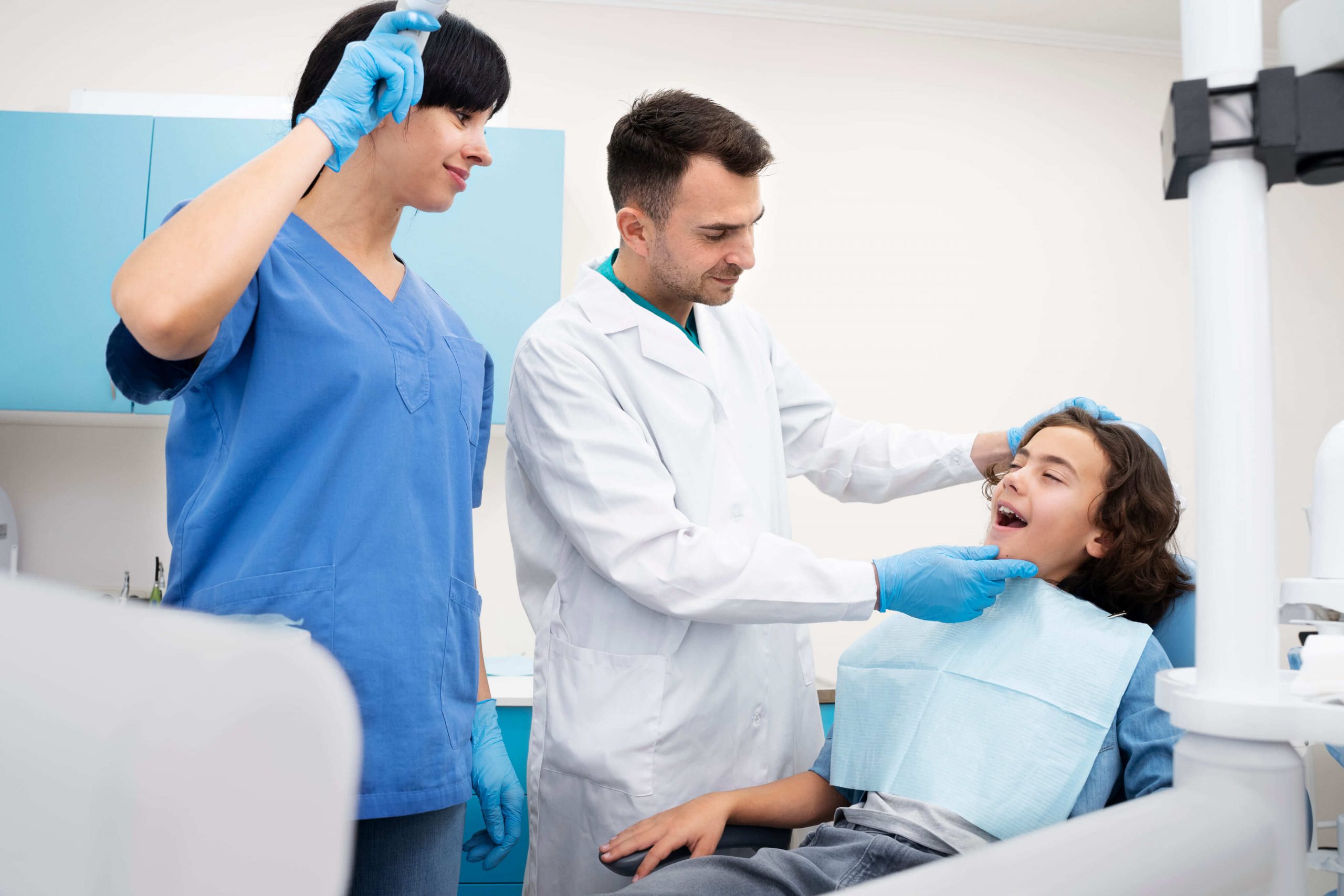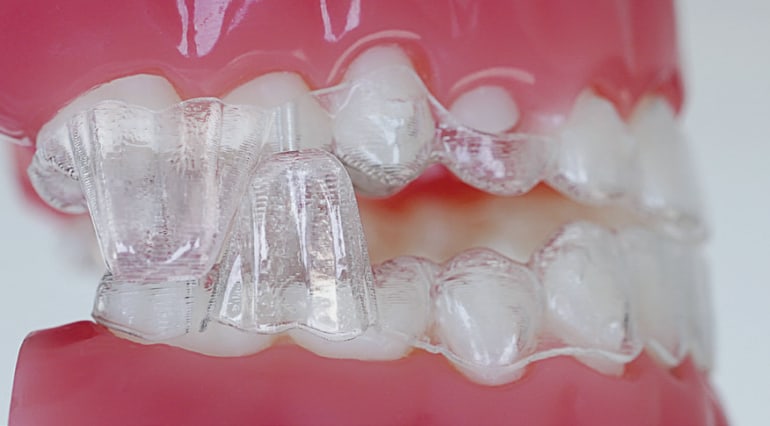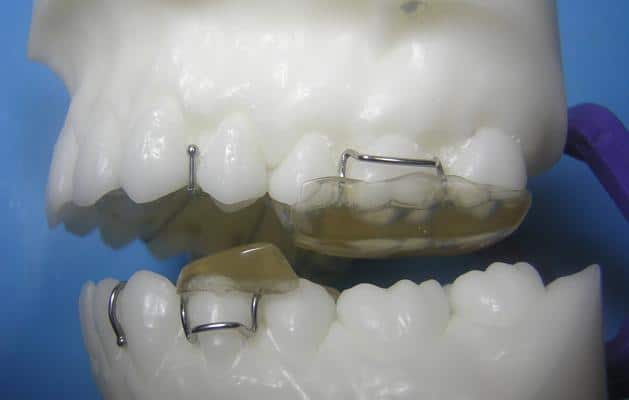
It may sound surprising, but Invisalign can do more than straighten teeth. Invisalign can move the lower jaw forward with a newer Mandibular Advancement feature. Invisalign can also expand the dental arches.

Invisalign MA moves lower jaw forward
Invisalign Can Move the Lower Jaw Forward with Mandibular Advancement
Reverse lower jaw position and mouth breather face can be fixed with different orthodontic appliances including Invisalign clear aligners. Some of the other appliances include Schwarz (for kids) and Vivos DNA and Homeoblock appliances (for adults). Moving the lower jaw forward is very important in correcting problems such as mouth breathing and sleep apnea. Mouth breathers have a very unique poor facial profile called mouth breather face.
Invisalign treatment can help move the lower teeth and jaw forward in the treatment of underbites or crossbites. This is typically done using specialized clear aligners that are designed for mandibular advancement. The specific Invisalign technique is called Invisalign MA. “MA” stands for mandibular advancement.
Contact us for an Invisalign consultation

Dr Gary Adams
Invisalign “wings” work like a Twin Block Appliance
Twin Block uses a top and bottom appliance that fit together with the lower jaw moves forward. This improve the growth of the bottom jaw, the overall bite and facial profile. The ramps are also called an index in dental orthopedics. An index is an appliance bite feature where the shape of the device only allows the patient bite into one position. Functional orthodontics increases airflow through the mouth by increasing the space in the mouth for the tongue. Anterior growth of the lower jaw also moves the tongue’s position of posture forward and further away from the airway.

Twin Block Appliance vs Invisalign MA
Invisalign MA Video about correcting reverse lower jaw position
How does Invisalign move the lower jaw forward?
Invisalign MA treatment involves using a series of clear, removable aligners that are customized to fit each patient’s individual needs. These aligners are designed to gradually shift the lower teeth and jaw forward into the correct position over time, which can help correct a reverse lower jaw position and improve the overall appearance and facial profile.
There are new programs in the Invisalign clear aligner system that can straighten teeth and expand the mouth and jaws at the same time. Expanders create more room in the mouth and nose so the airway spaces are more open for breathing. This naturally helps with nasal breathing and decreases airway resistance and the need for mouth breathing. Invisalign cost is higher with mandibular repositioning wings and advanced airway techniques.
What Causes Mouth Breathing?
People breathe through their mouth out of necessity. When someone cannot get enough oxygen through their nose, they mouth breathe. The mouth is a bigger hole (than the nose) and more air can fit through a larger space. Mouth breathing happens when oxygen demands cannot be met with nose breathing.
How to stop mouth breathing?
Mouth breathing can be stopped by
- Increasing the size of the nasal airway and
- Improving airflow through the upper airway.
The size of the nose bone can be increased with an orthodontic appliance called a palatal expander. And Invisalign can be used as an expander. Palatal expanders stimulate the roof of the mouth to grow wider. The roof of the mouth, aka the palate, is same bone as the bottom of the nose. By expanding the mouth and the jaws, the internal base of the nose increases in size and more air can pass through the nose.
Invisalign decreases airway resistance and improves breathing
Invisalign can be used to move the mandible (lower jaw) forward. Airflow is increased through the upper airway by moving the lower jaw and tongue further away from the throat and airway. During deep sleep the tongue muscle relaxes and the tongue can fall back into the throat and block the airway. Repositioning appliances move the tongue position further away from the throat, so it is not slow close to the throat.

 (301) 421 1996
(301) 421 1996 burtonsvillesmiles@gmail.com
burtonsvillesmiles@gmail.com